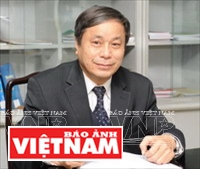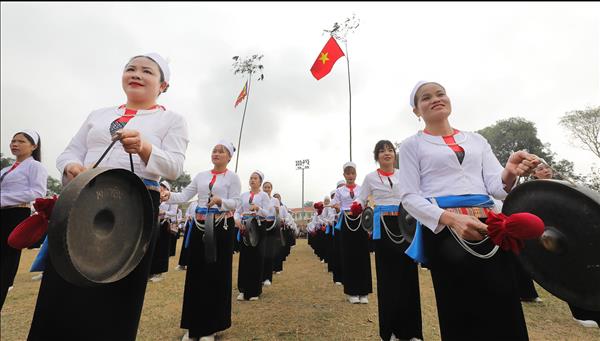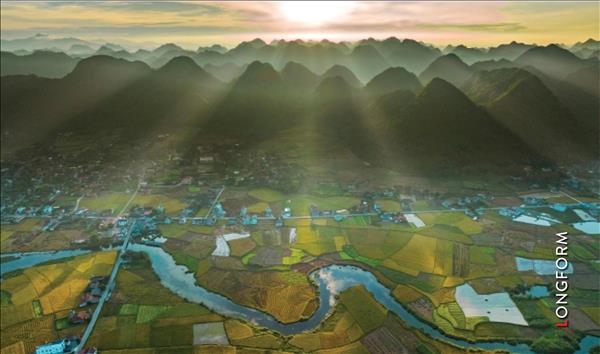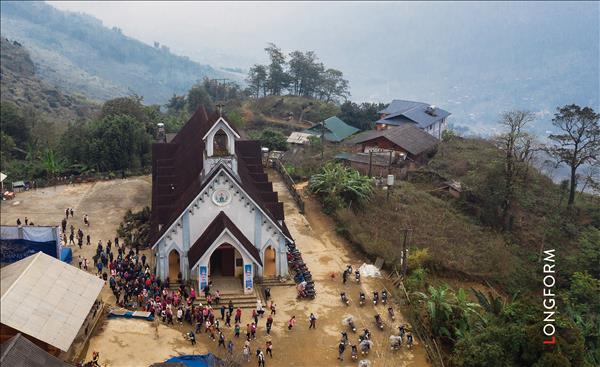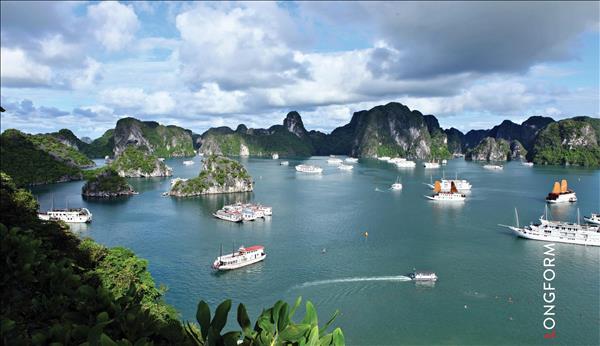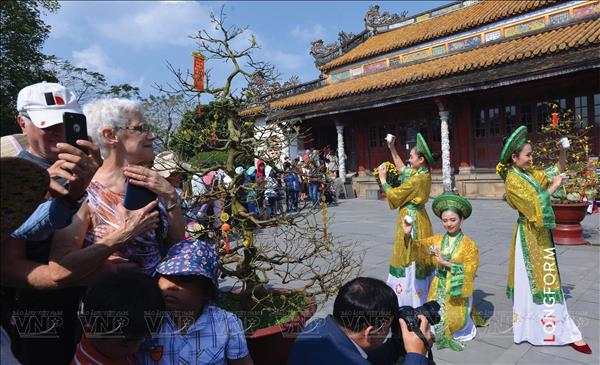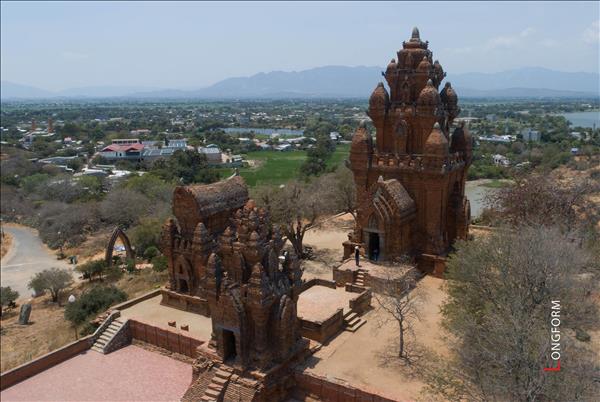When rivers and mountains no longer separate us
Nine years ago in 2007, in Manila, the Philippines, we sat in a cafe, a waiting to report on the 6th ASEAN People’s Assembly (APA6 for short). We talked with our colleagues from ASEAN countries about the formation of the ASEAN Community though no one could guess where such story would go as perhaps it was too soon then to speak of such a great thing. (In January 2007, the ASEAN leaders decided to shorten the time schedule for formation of the ASEAN Community by five years from 2020 as stated in the Declaration of ASEAN Concord II (Bali, 2003) to 2015).
Also at this meeting, Carolina G. Hernandez, President of the Institute for Strategic and Development Studies (ISDS Philippines) and also the chairperson of the conference, said that the vast majority of the ASEAN people have gone through difficult historical periods with wars, poverty, diseases and now with anxieties about terrorism and instability. It was, therefore, a desire by every ASEAN person to live in an environment of peace and prosperity.
|
The ancient beauty of the imperial capital of Hue. Photo: VNP’s file 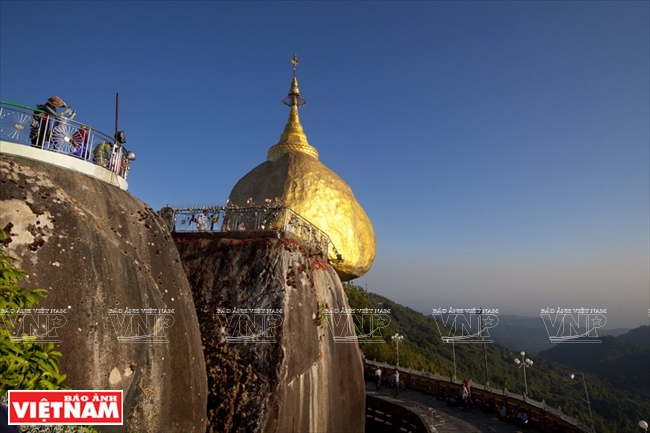 Kyaikhtiyo Pagoda or Golden Rock is a famous relic in Myanmar. Photo: Kim Phuong/VNP The Royal Palace in Thailand. Photo: Hoang Quang Ha/VNP 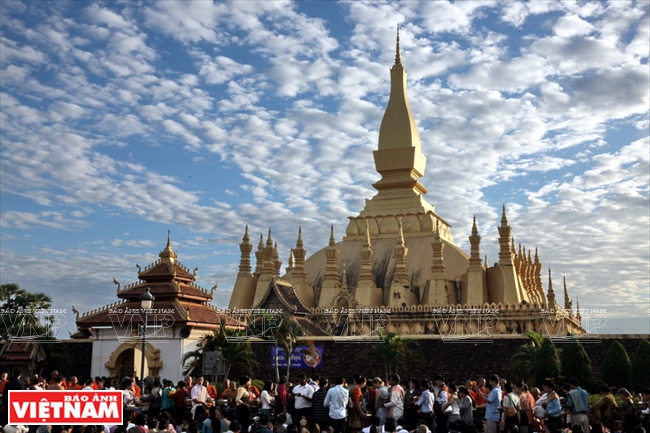 Pha That Luang or Great Sacred Stupa in Vientiane built in 236 of the Buddhist Calendar is the most important Buddist monument in Laos. Photo: Nguyen Thang/VNP Bayon Temple in the Angkor Complex in Cambodia. Photo: Kim Phuong/VNP |
|
There live in Southeast Asia hundreds of different nationalities, thus resulting in extreme diverse customs and practices. Going through a thousand years-old history, emerging and growing together in one geographical region and being together influenced by the wet-rice civilization, the Southeast Asian countries’ cultures and beliefs witness similarities, though they are extremely diverse, which is the belief of revering nature, the belief of worshipping lost souls. In a nutshell, the Southeast Asian cultures constitute one unified in diversity. This spirit of close relationships and mutual affection has incrementally shaped the common ASEAN identity to link the ASEAN inhabitants together in the sense of community and take the ASEAN values far beyond the region. . |
When “rivers and mountains no longer separate us”, the ASEAN people have more and more chances to be closer, binding together in a “great family” with multi-cultures and multi-nationalities but only one vision and one identity. Therefore, more than ever, the socio-cultural pillar with values spreading in almost all domains, from education, culture, health, social welfare, environment to response to such challenges as diseases and epidemics, drugs and natural disasters will contribute to the care for and qualitative improvement of people’s lives in a comprehensive and substantive manner.
It is evidenced that over the past decade, the poverty and extreme-poverty rate in member countries has dropped over four times; the number of middle-class people has increased six times, from 50 million people in 2004 to 300 million in 2014.
Effective and ebullient cooperative activities through various frameworks and mechanisms have formed a habit of cooperation and sharing so as to build together the great family of Southeast Asian nations that protect and help one another for mutual development. This spirit of close relationships and mutual affection has incrementally shaped the common ASEAN identity to link the ASEAN inhabitants together in the sense of community and take the ASEAN values far beyond the region.
Vietnamese imprints
The foundation of the ASEAN Community is of especially important significance not only for the region but also for each member nation, including Vietnam. It becomes even more significant when this event coincides with the landmark of 20 years of Vietnam’s integration into the Association (1995-2015). Over the past two decades, Vietnam has made marked contributions to the growth and common successes of ASEAN, which have been acknowledged by various countries.
A dragon dance festival in Hanoi. Photo: Cong Dat/VNP
Performing Ca tru, the world cultural heritage. Photo: Tat Son/VNP
The beauty of a Malaysian girl. Photo: Tran Thanh Giang/VNP
The Bruneian traditional dance. Photo: Hoang Quang Ha/VNP
The Indonesian traditional art troupe performs during ASEAN Cultural Week 2014. Photo: Hoang Quang Ha/VNP
The traditional art troupe of the Philippines performs at Hue Festival 2012. Photo: Tran Thanh Giang/VNP
A traditional dance of Singaporeans. Photo: Vu Khanh/VNP
Vietnam has left special imprints in accelerating the formulation and finalisation of orientation documents for the achievement of objectives of the ASEAN Socio-Cultural Community. In the ASEAN presidency in 2010, Vietnam put forth the initiative, taking prime responsibility for formulating and submitting to ASEAN Summit leaders for the adoption of two important documents of the ASEAN Socio-Cultural Community, namely the Hanoi Declaration on the Enhancement of Welfare and Development of ASEAN Women and Children and ASEAN Declaration on Resources and Skills Development for Economic Recovery and Sustainable Growth.
Vietnam also put forth the initiative and joined ASEAN countries in the efforts to formulate other declarations such as the ASEAN Joint Declaration on the enhancement of social welfare, the ASEAN Declaration on the Elimination of Violence Against Women and Elimination of Violence Against Children in ASEAN; Bandar Seri Begawan Declaration on Youth Volunteerism and Entrepreneurship; and the ASEAN Declaration on Enhancing Cooperation in Disaster management. These Declarations were all adopted in 2013. These are important documents for oriented activities as well as acceleration of the process of building an ASEAN Community in 2015.
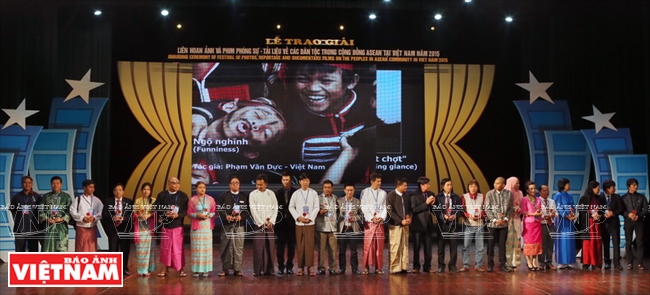 The awarding ceremony of the Festival of Photos, Reportage and Documentary Films on the Peoples in ASEAN Community 2015. Photo: Tat Son/VNP 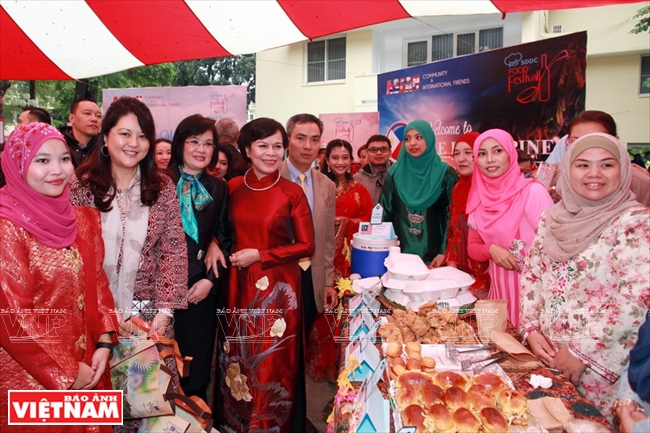 Mai Thi Hanh (red traditional long dress), wife of State President Truong Tan Sang participates in the 3rd Food Festival entitled “ASEAN Community with International Friends”. Photo: Tran Thanh Giang/VNP 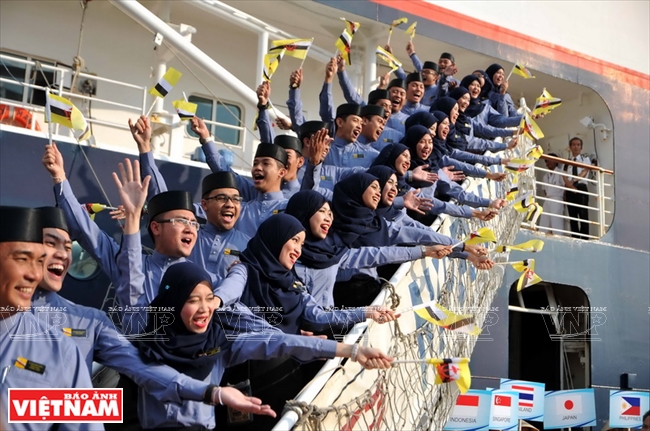 A young delegation from Brunei arrives in Ho Chi Minh City. Photo: An Hieu/VNA  ASEAN reporters and artists visit the ASEAN Corner at the Museum of the Cultures of Vietnam’s Ethnic Groups in Thai Nguyen Province. Photo: Viet Cuong/VNP Filipino traditional art troupe performs at Hue Festival 2012. Photo: Tran Thanh Giang/VNP 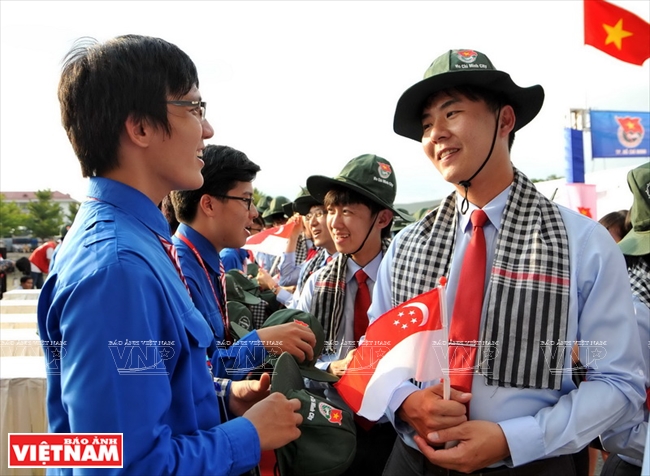 Young people from ASEAN countries and Ho Chi Minh City share opinions with each other. Photo: An Hieu/VNA  Hanoians participate in a walk for a peaceful and prosperous ASEAN Community to mark the 43rd ASEAN Anniversary and the 15th year of Vietnam’s accession to the bloc. Photo: Ngoc Truong/VNA 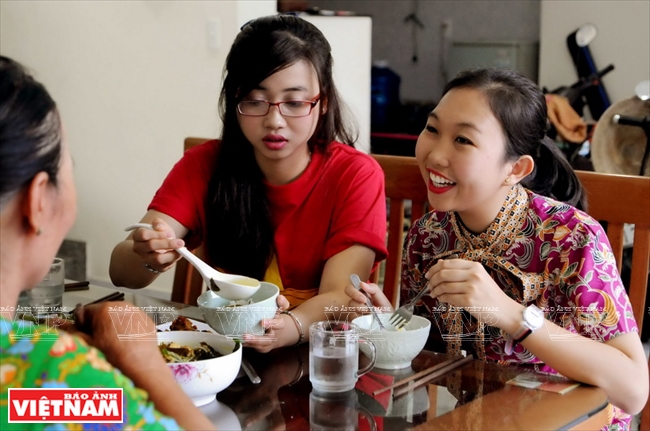 Young people from ASEAN countries live with a Vietnamese family in Ho Chi Minh City. Photo: An Hieu/VNA |
Vietnam has endeavoured to carry out practical socio-cultural exchanges, aiming to strengthen the solidarity and deep attachment among the Southeast Asian nations. In recent years, Vietnam has sponsored the organisation of diverse activities of cultural and artistic exchanges and people’s diplomacy, creating the bridges linking Vietnamese people with friends in ASEAN countries.
The Week of ASEAN Cultures opened in Hanoi in 2004, attracting nearly 500 actors and actresses from ASEAN countries, thus creating a great cultural event and propagating the values of ASEAN cultures. At various Hue International Festivals, audiences had the chance to enjoy specific traditional art performances by artists from Laos, Cambodia, Myanmar, the Philippines, Malaysia and Singapore. The Festival of Photos, Reportage and Documentary Films on the Peoples in ASEAN Community was organised three times by Vietnam’s Ministry of Information and Communications, which gave Vietnam great prestige. In addition, hundreds of other cultural and artistic events such as workshops, photo and painting exhibitions, culinary exchanges, discovery tourism, medical support, natural disaster and calamity prevention and combat exercises were also organised regularly. The vigorous participation of mass media has created an important information channel, enhancing the community contacts.
Though difficulties and challenges still lie ahead for the ASEAN Community, more than 600 million Southeast Asian inhabitants, including the Vietnamese people, with the spirit of unity, deep attachment and sharing for a vision and an identity, and with strong confidence and firm stuff, will be of one mind, surmounting all challenges for the future of a united and strong ASEAN Community.
Vietnam has endeavoured to carry out practical socio-cultural exchanges, aiming to strengthen the solidarity and deep attachment among the Southeast Asian nations.
“The basic objective and master plan of the ASEAN Socio-Cultural Community (ASCC) are to contribute to building an ASEAN Community taking people as centre, with social responsibility, aiming to build a harmonious and open society where people’s lives and welfare are constantly improved. These values of the ASCC not only enrich the ASEAN identity but also create inner strength, contributing to the development, integration and stability of the entire”.
(Dr. Nguyen Duy Dung, Director of the Southeast Asian Studies Institute)
|
By Thanh Hoa - Photos: Nguyen Thang, Hoang Quang Ha, Tat Son,
Tran Thanh Giang, Cong Dat, Kim Phuong, Viet Cuong & VNA

